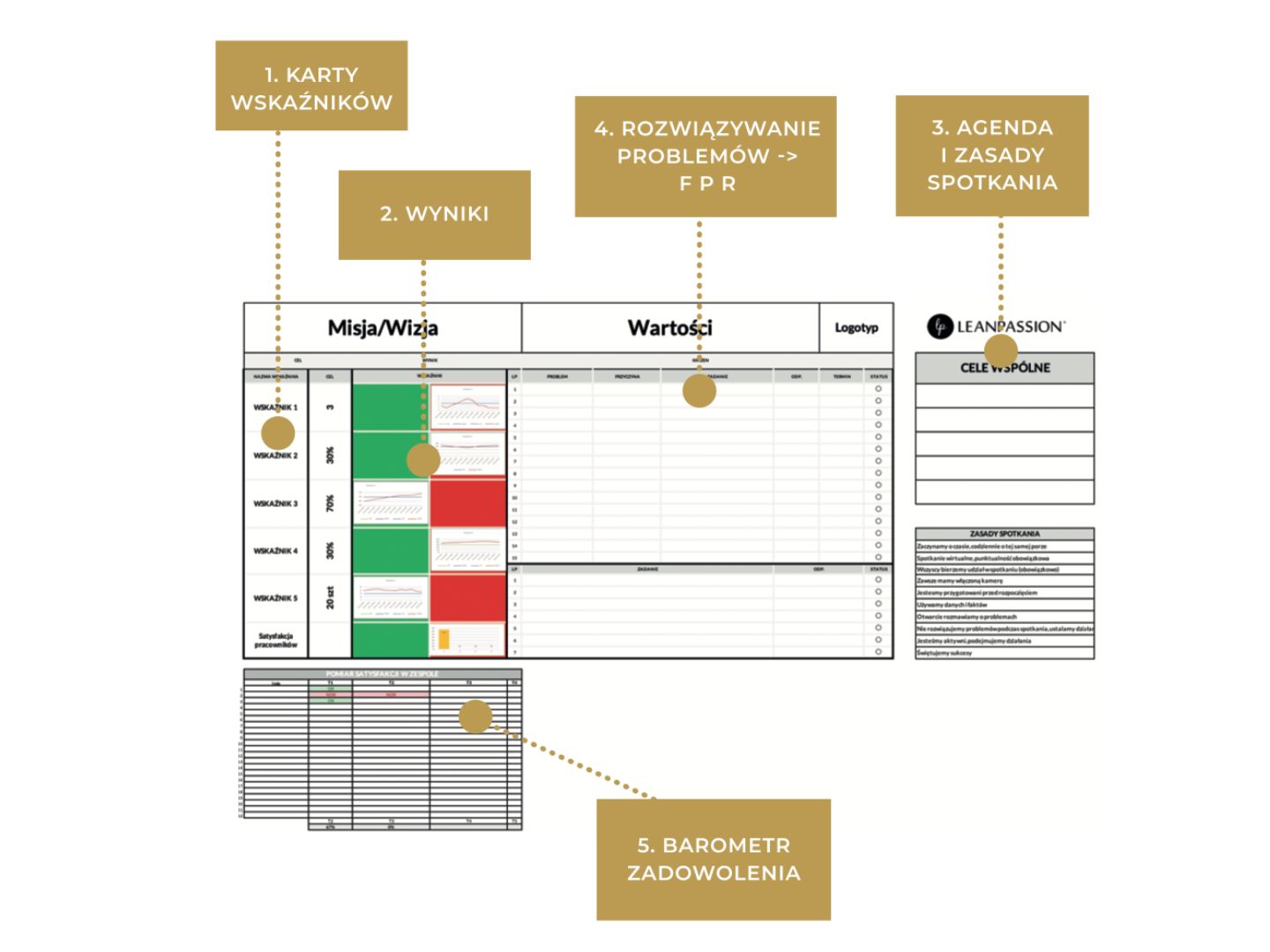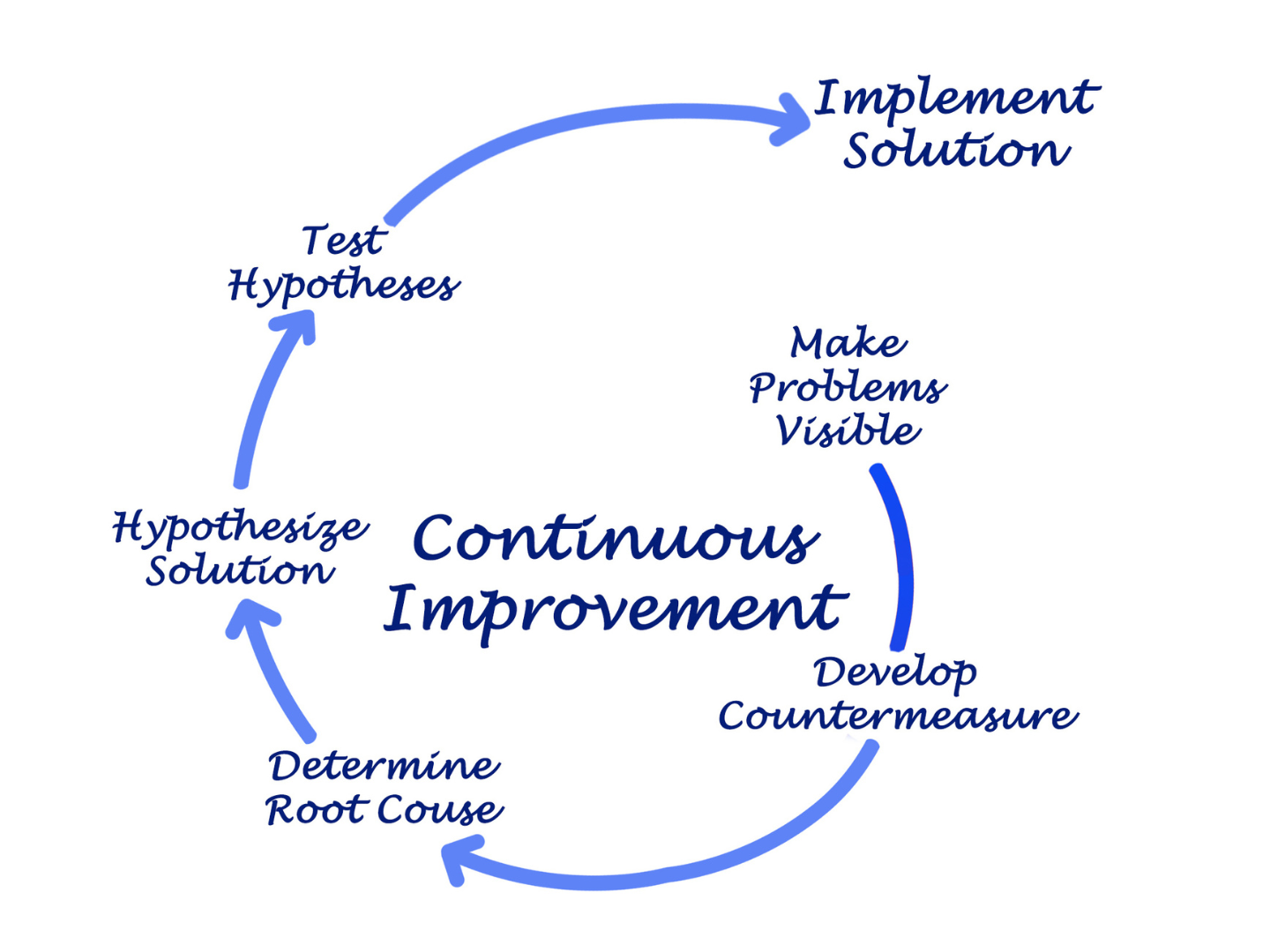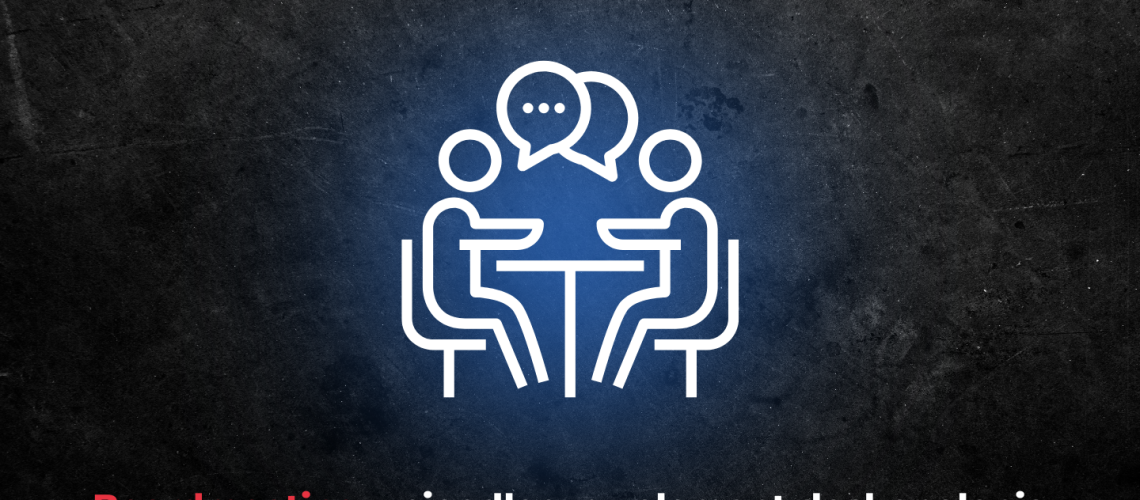boardmeeting boardmeeting boardmeeting
Last updated: 20.03.2024
In today's volatile times, organizations are looking for ways to rapidly improve performance and further engage the team in continuous improvement. The easiest way toward continuous improvement, adaptability, building engagement and, incidentally, improving efficiency and performance, is to focus not only on processes, but more importantly on people, on the relationship of leaders with people, and on a work environment in which people feel comfortable.
Table of Contents:
- Don't assume that people are interested in improving the company
- Don't tell people how to work
- Make the team "see" the problems
- Run the Goal-Result-Kaizen cycle
- Make improvement part of your company's DNA
- Achieve what is impossible for others
In Article:
- In today's volatile times, organizations are looking for ways to quickly improve performance and further engage the team in continuous improvement.
- Inherent in the work of managers and team leaders is the need and desire to build an engaged, integrated and effective team and to create such conditions that it is the employees themselves who want to improve.
- The easiest way toward continuous improvement, adaptability, building commitment and, incidentally, improving efficiency and performance, is to focus not only on processes, but first and foremost on people, on the relationship of leaders with people, on a work environment where people feel good.
- Employees are usually not involved in the company, so why do managers think they will be involved in improving the company?
- Everything changes when people feel part of the organization, have influence, know their role and understand the company's strategy.
- So how do you create a system for effective problem solving and get the team to "see" the problems? The solution is to involve the team in identifying and eliminating waste. Boardmeeting, or status team meetings, comes to the rescue.
- Boardmeeting sustains employee engagement and should be an integral part of improvement.
- To ensure that the change we have made is not just a single spurt and that people never return to old habits again, improvement must be a continuous process, embedded in the DNA of the organization.
See also: An effective leader counts to three!
Don't assume that people are interested in improving the company
The easiest way toward continuous improvement, adaptability, building commitment and, incidentally, improving efficiency and performance, is to focus not only on processes, but first and foremost on people, on the relationship of leaders with people, on a work environment where people feel good.
In modern organizations, people are usually not involved in the company. So why do managers think that employees will be involved in improving it? Everything changes when people feel part of the organization, have influence, know their role and understand the company's strategy. Leaders should first focus on creating a sense of existence, building a sense of belonging to that sense of existence, and finally creating a work environment where people have influence and responsibility.
One of the biggest mistakes organizations make when trying to engage employees in continuous improvement is assuming that people are interested in this continuous improvement.
Radek Drzewiecki, author of the podcast Effective CEO
Don't tell people how to work
As managers, let's never tell people, "We're going to implement changes, plus we'll tell you how you're going to work." Improvement is not an incidental process, it is written into the DNA of the organization. The process of incorporating continuous improvement is a long-term process. At the LP Group, which includes Sherlock Waste, we guide clients through 5 steps of strategic transformation, resulting in organizations gaining above-average adaptability, increased engagement, reduced turnover and improved business performance. They grow twice as fast as the market grows.
However, in today's volatile times, organizations are looking for ways to quickly improve performance and further engage the team in continuous improvement. Not everyone wants to follow the 5 steps of the Lean Strategy at the beginning. Strategic transformation takes time for an organization - 2 to 3 years. And most organizations need performance improvement in the here and now. The best method that produces amazing results in terms of both team effectiveness and people engagement are Boardmeetings. These regular status meetings, which operate on a goal-result-kaizen cycle, engage the majority of employees in achieving goals, discussing problems, debating the causes of those problems and finding solutions.

Boardmeeting: make the team "see" the problems
Inherent in the work of managers and team leaders is the need and desire to build an engaged, integrated and effective team, and to create such conditions that it is the employees themselves who want to improve and change. So how do you create a system for effective problem solving and make the team "see" the problems? The solution is to involve the team in identifying and eliminating waste. With help comes Boardmeeting, or status team meeting. Such a meeting is held at a board specially designed for this purpose, which is one of the elements of visual management.
Visual management isn't just about monitoring performance, it's about letting people know and see that they worked well on the day and whether they have anything to improve.
Klaus Lyck Petersen, an authority on Lean transformation with a strong emphasis on developing strong leaders and helping them through the change.
Boardmeeting board can be used for desktop work in the office, but also works well for remote work. It is a great inspiration, keeps employees engaged and should be an integral part of improvement. Improvement must be a continuous process, so that the change we have made is not just a single spurt and people never go back to old habits again.

Boardmeeting: Start the problem-solving cycle
Working with a properly constructed board for Boardmeeting engages people in the problem, cause and solution, i.e. the main problem-solving cycle. Launching this Goal-Result-Kaizen cycle with the help of visualization is really simple - all we need is a board with the status of implementation marked, where green means "good" and red means "to improve." With the information on the board, we can immediately see which goals we have met and which we haven't. A leader conducting a Boardmeeting can easily ask why the goals were not met. However, one important quality is needed for such meetings - patience. Regularity of meetings is also very important, as only then does running a board make sense.

Boardmeetings are a very effective tool for a leader's daily work. It is important to learn step by step how to conduct them. In this way, during the meeting, the leader naturally triggers a discussion of problems and successfully together with the team find the reason why the goals were not achieved. What's more, they do this without blaming anyone. Because people don't have bad intentions and don't work especially badly.
One of the advantages of holding status meetings is that when working with a team, leaders no longer have to improvise on the job, they can monitor goal achievement and problem solving with their people, which translates into team integration, commitment and increased efficiency.
Make improvement part of your company's DNA
Most such meetings focus on talking only about results. And in fact, for Boardmeeting to fulfill its role, it should not be a meeting about who is doing what, what the results were, or what our plan is for today. The main purpose of Boardmeeting is to focus the entire team on achieving common goals, but - this is very important - with the need to discuss the problems that prevented the achievement of these goals. The problems are focused on why we, as a team, failed to achieve the results. We discuss potential causes for these problems and work together to find solutions.
When a leader does this regularly, he builds a very high level of authority among team members. If he triggers a daily or weekly discussion about goals, about results, about problems, causes and ideas, it means that improvement is written into the DNA of the company. All problems, causes and ideas are about the failure to achieve the goal. No blaming. People love these meetings.

Achieve what is impossible for others
It takes about 3 months to prepare a leader to conduct Boardmeetings, and then it takes a minimum of 6 months for him to do them in a certain cycle, consciously. Teaching him to choose only one problem to solve is the real magic.
After 6 months or so, when we see that the team is ready, we also involve team members in conducting Boardmeeting. Each employee alternates leading the meeting, talking about results, goals, problems, causes, solutions. Importantly, failing to close this goal-result-kaizen cycle in meetings and focusing only on discussing results will result in people not willing to participate and we will not get any results.
The introduction of Boardmeeting contributes to making impossible things happen:
- we're getting better at meeting goals because people are focused on talking about those goals,
- we have a minimum of 80% of the team involved in problem solving, because people talk not about how to improve the company, but in a common-sense way, pursuing the problem-cause-solution cycle,
- talking about results paradoxically triggers a discussion about what these people are really interested in at work - what problems they have, what the potential causes of these problems might be, and this leads naturally, without imposition, to a discussion about solutions.
EVERYTHING YOU NEED TO KNOW ABOUT BOARDMEETING:
Regular status meetings - Boardmeetings - produce spectacular results both in terms of improving team performance, as well as involving the majority of employees in achieving goals, discussing problems and their causes, and finding the best solutions.
Types of Boardmeeting:
- Team boardmeeting
- Litigation boardmeeting
Boardmeeting Objectives:
- Focusing the team on achieving common goals
- evoking the need to discuss problems
- discussion of the potential causes of these problems
- coming up with ideas for their solution
Why Boardmeetings are worth and should be conducted:
- Increase efficiency and team engagement by 15-30%
- Addressing 8 out of 10 employee expectations of a leader
- Focus of all team members on achieving goals, key initiatives and systematic problem solving
- Connection of employees to the team, to the organization and commitment to its improvement, i.e. above-average adaptability
- Building the authority of the leader among the team
__________________________
If your challenge is to manage your team effectively, focusing on process optimization with active employee engagement, see how modern technology Sherlock Waste can support you in this. Contact us: schedule a meeting >>






